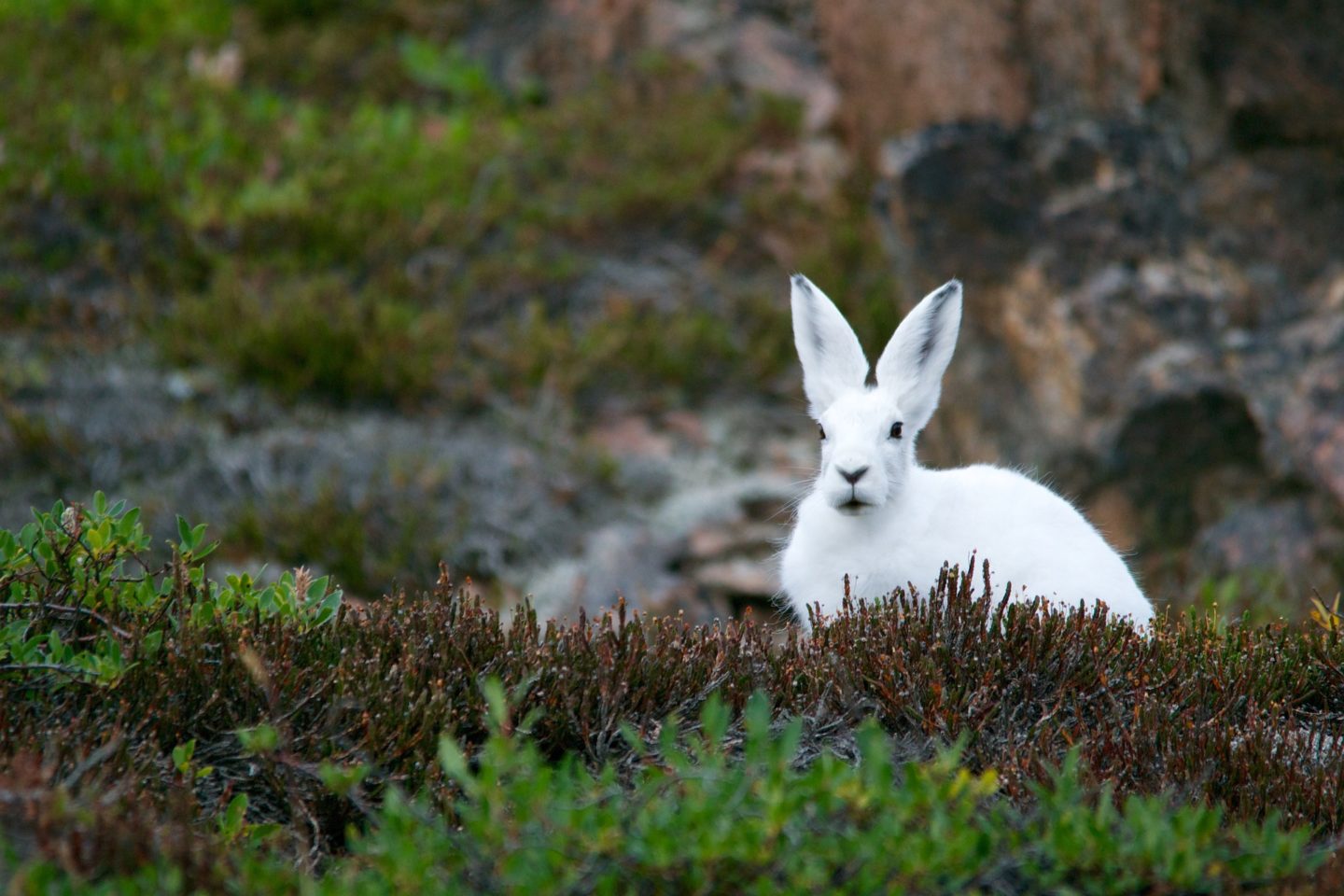The scale of commercial mountain hare shooting in Britain has been highlighted in a new report that calls for the killing of the species to be licensed all year round.
The report from animal charity OneKind, published on the eve of the open season on mountain hares getting underway, suggests the animals – also known as white or blue hares – are under threat from lucrative shoots and mass culls.
Shooting mountain hares, native to the Scottish Highlands, is one of many country sports offered by game estates. Some landowners also organise culls to try to control the spread of louping-ill, a virus transmitted by ticks that affects red grouse also shot for sport.
But opponents claim the population, estimated to be between 175,000 and 500,000, could be at risk due to lucrative commercial killing and mass culls, with OneKind suggesting it may have declined by 34% in the past 20 years.
The charity names 25 companies advertising hare shooting – some stating that between 100 and 200 hares a day can be shot. They include Viscount Sporting, based in Royal Tunbridge Wells, which advertised shooting packages in Tomatin, Inverness-shire, for nine people at £4,200 a day. Highland-based Peter Swales International Big Game and Bird Hunting, another firm listed also offers African safaris.
OneKind says at least three culls took place last winter in the Cairngorms including one on Farr estate, near Tomatin in February, when a photographer captured a vehicle full of dead hares.
Balmoral estate, the Queen’s residence in Scotland, is mentioned for two culls in 2016. At the time, the Queen was urged to intervene and stop the killing.
In reply, Richard Gledson, factor at Balmoral, said: “We don’t do commercial hare shooting. We do cull hares, it is done by estate staff. In the last five or six years the numbers have picked up, so when we feel it’s right we take a number out.
“Our intention, wish and desire is to have a sustainable number of hares on the hill. Our numbers are really healthy and we want them to be healthy because we have three pairs of Golden Eagles and that’s their main prey species.”
OneKind also names the 7,000 acre Balavil Estate, Inverness-shire, home to the mansion known to millions as Kilwillie from the BBC television series Monarch of the Glen. It highlights evidence indicating up to 200 hares being killed there in one day.
However, the estate said that new owners – who took over in 2015 – have no plans for hare shooting and that the figures had appeared on an old website set up by the previous owners.
The Scottish Government’s environmental advisers, Scottish Natural Heritage (SNH), accept that hares carry ticks but suggest culling makes little difference to grouse numbers. SNH is also concerned that mountain hare snaring is causing unnecessary suffering.
A report for SNH estimated that an estimated 25,000 mountain hares were killed in 2006/7 – with about 40% were shot for sport and half killed during secretive culls.
Hares are protected from March to July, when a licence is required for killing them. OneKind is calling for all year round licensing to be introduced and an immediate moratorium on large scale hunts and culls.
OneKind Director Harry Huyton said that mountain hares are “persecuted in enormous numbers for entertainment”.
He added: “This killing is unregulated, and there are no guarantees that it is not further driving the decline of these species or causing unacceptable suffering. OneKind is calling on the Scottish government to take urgent action and introduce a moratorium on large-scale hunts and culls before the season gets into full swing.”
In reply, Tim Baynes, director of the Scottish Moorland Group – which is managed by landowners group Scottish Land and Estates – said that culling is carried out for good reasons and there is no question of the population being wiped out.
He added: “Mountain hares can affect fragile habitats, spread sheep tick which transmit the louping ill virus to red grouse, and transmit Lyme and other diseases to humans. Responsible culling of many species is recognised and carried out even by conservation bodies. There is no point in culling hares, or indeed any desire to, if there could be any risk to their conservation status.”
Swales said: “The last thing we ever want to do is wipe them out. We want them to go on forever (but) over population is as bad as under population. It’s just farming. That’s all it is.”
A Scottish government spokesman said: “We will not tolerate large-scale culls of mountain hares but we recognise that numbers need to be controlled in some specific circumstances.”














